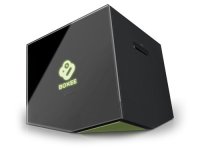Two trends for 2010 together in one Boxee


- Open source with a standard retail business model.
- The unity of all media.
As our Rachel King observes in her headline, this is an alliance between an open source software company and a hardware outfit, D-Link. This is important, because D-Link knows the channel and Boxee can supply the sizzle.
D-Link notes that there are a host of business-related applications for the Boxee Box, including training and meetings. On its blog, Boxee notes the consumer applications of the device, free movies, TV, radio, fun.
Both these desires need to be addressed for the creators' goals to be attained. This can be a mainstream business device -- go down to Fry's and stick this in the conference room. That demand can be important in order to ramp up production and hit the consumer segment, the mass market Boxee needs to meet its goals.
Business applications are especially important when you consider this box will hit the market in the second quarter. Small business demand can lead to the multi-million unit orders that bring this in from China at a consumer price point for placement under the Christmas tree.
The Boxee offer makes the software look a lot like other open source video players like Miro. Should the device be a success it's easy to see D-Link competitors calling on these open source players, looking to adapt what they have into proprietary hardware.
Throughout the 2000s (how can you finish a decade without getting a clear name for it) we've seen TV and Internet media as two trains running on one line, separate but equal. They started to come together mid-decade, but then with the rise of HDTV they parted again.
Now, in time for the new decade, they're coming together again. (Let's get this straight. The new decade is the teens, not the 2010s. You 20th century people need to get over yourselves.)
The question shoppers will be asking when they go out next Christmas is, should they?